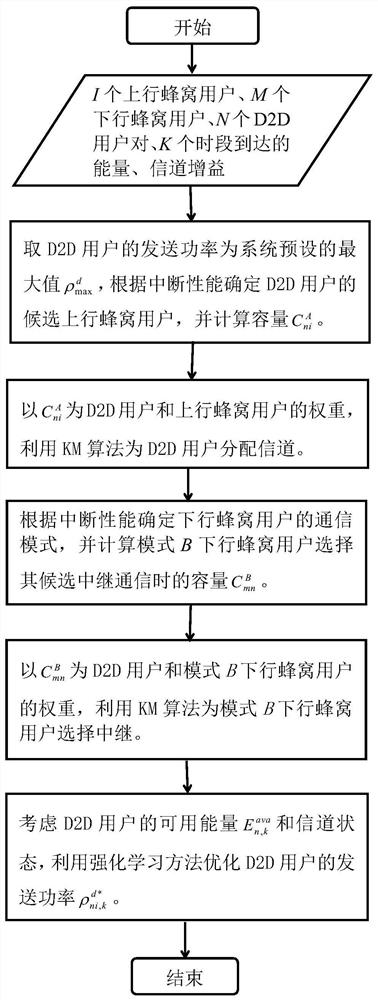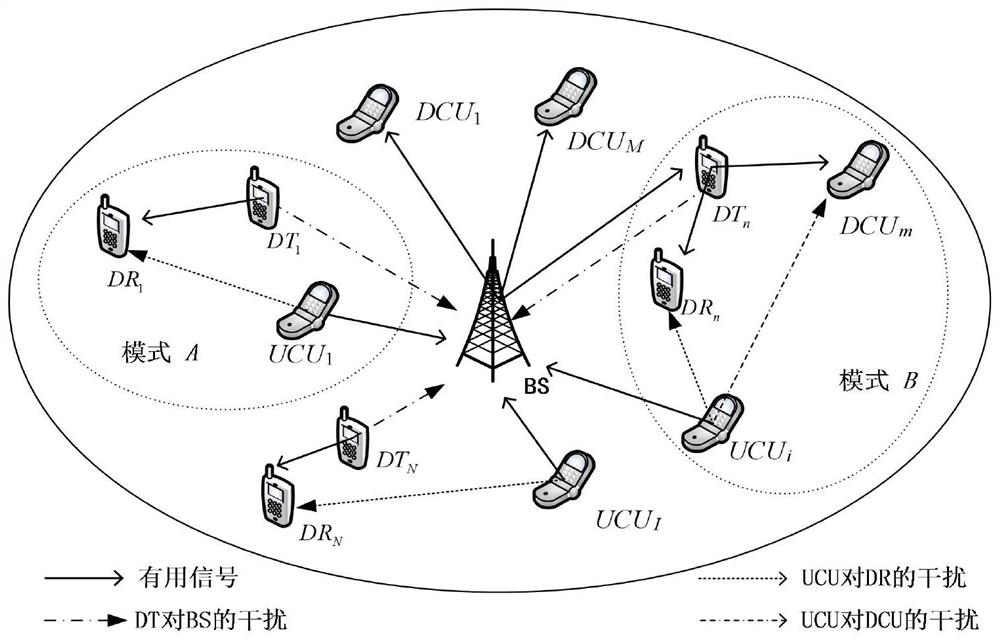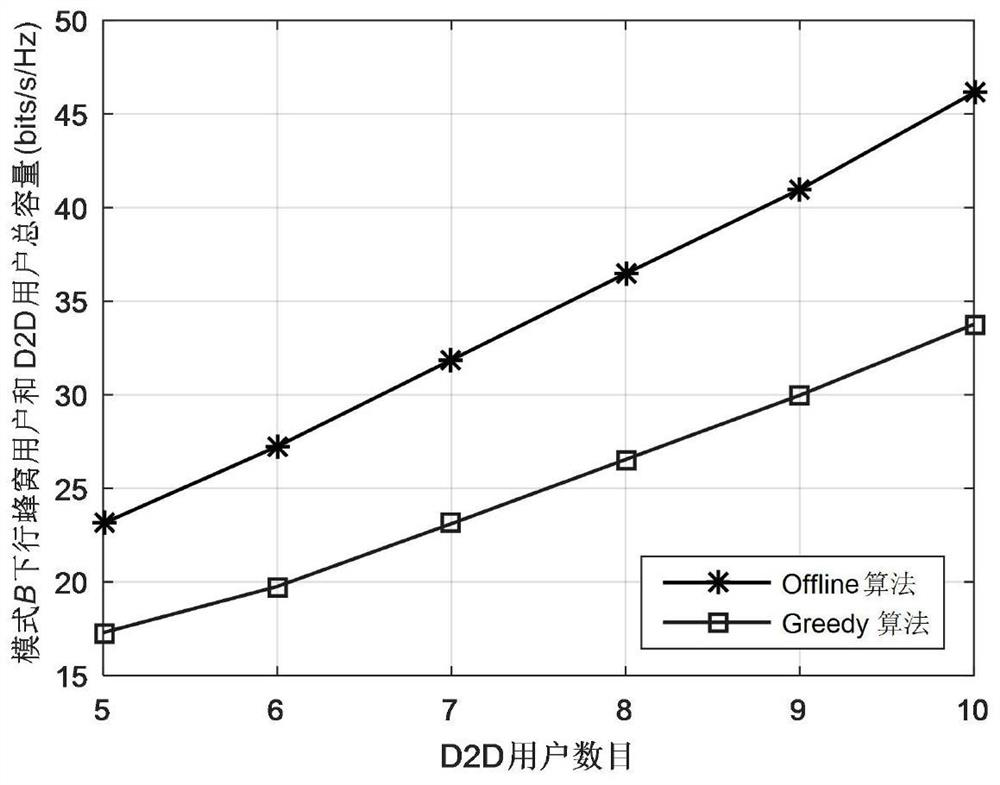A resource allocation method for energy harvesting d2d communication based on reinforcement learning
A technology for communication resource allocation and energy collection, which is applied in network traffic/resource management, wireless communication, energy consumption reduction, etc., to achieve the effects of reducing medium probability, improving coverage, and increasing target user capacity
- Summary
- Abstract
- Description
- Claims
- Application Information
AI Technical Summary
Problems solved by technology
Method used
Image
Examples
Embodiment Construction
[0039] The overall flow chart of the energy harvesting D2D communication resource allocation method based on reinforcement learning studied in the present invention is as follows: figure 1 shown, including the following steps:
[0040] 1. Establish the optimization problem of maximizing the total capacity of downlink cellular users and D2D users in Mode B:
[0041] like figure 2 As shown, considering the single-cell model, the cell includes a base station located in the center of the cell, I uplink cellular users, M downlink cellular users and N pairs of D2D users, with UCU={UCU 1 ,...,UCU i ,...,UCU I }, DCU={DCU 1 ,...,DCU m ,...,DCU M } and DU = {DU 1 ,...,DU n ,...,DU N } represents the uplink cellular user set, downlink cellular user set and D2D user set, respectively, where UCU i , DCU m and DU n respectively represent uplink cellular user i, downlink cellular user m and D2D user n, each D2D user pair includes a D2D transmitter and a D2D receiver.
[0042] ...
PUM
 Login to view more
Login to view more Abstract
Description
Claims
Application Information
 Login to view more
Login to view more - R&D Engineer
- R&D Manager
- IP Professional
- Industry Leading Data Capabilities
- Powerful AI technology
- Patent DNA Extraction
Browse by: Latest US Patents, China's latest patents, Technical Efficacy Thesaurus, Application Domain, Technology Topic.
© 2024 PatSnap. All rights reserved.Legal|Privacy policy|Modern Slavery Act Transparency Statement|Sitemap



